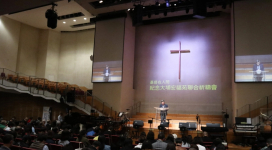Two years ago, Baylor University set out to remake itself a top-tier university by expanding and strengthening the school's academic and religious commitments on the model of Notre Dame.
Championed by President Robert Sloan, the 10-year plan, Baylor 2012, has led to more than just new dorms and an honors college. It also added faculty and expanded graduate programs.
Financed by endowment growth and a tuition increase of 36 percent, Baylor 2012 commits $80 million to student scholarships, $77 million to faculty hiring, $51 million for staff and $40 million for capital projects.
The undergraduate population of 12,000 will be decreased slightly and the graduate population of 2,000 will be increased slightly to encourage more research on campus.
The faculty hiring - 230 new positions, of which 75 have already been filled - is likely to have the biggest impact.
Critics claim the plan has increased debt to a quarter-billion dollars, pushed tuition to levels unaffordable by students from middle-income families and forced instructors to meet narrow and rigid religious tests.
Twice in the last year, the university’s Faculty Senate passed votes of no confidence in Sloan as president.
Regents responded last September by affirming Sloan by a 31-4 vote. But at the board’s May meeting, he came within one vote of losing his job.
At that same meeting, John Baugh, a major Baylor benefactor from Houston, warned he would ask the university to repay loans and return financial gifts he made if the board failed to rescue Baylor from “the paralyzing quagmire in which it currently is ensnared.”
School’s regents met July 21-23 for a three-day retreat to discuss Baylor 2012. Despite struggles, they unanimously reaffirmed their commitment to Baylor 2012, the school’s 10-year vision.







